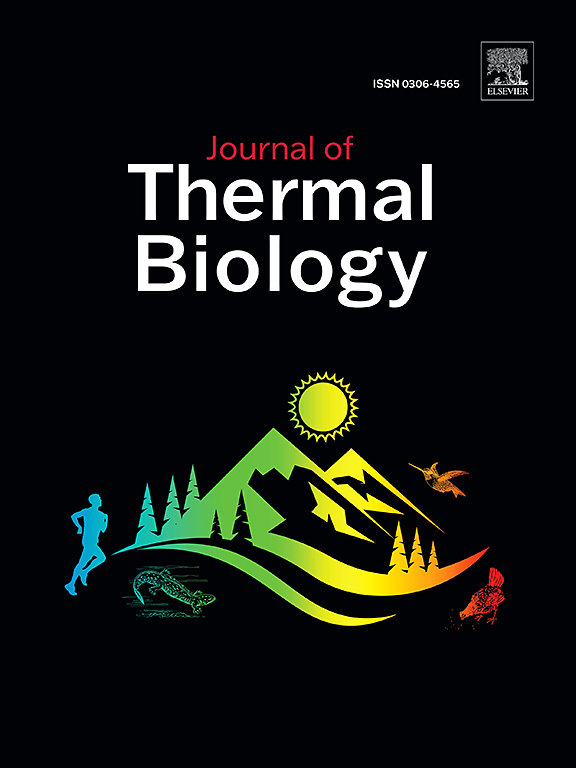Thermal physiology of dung beetles exposed to ivermectin, a veterinary drug
IF 2.9
2区 生物学
Q2 BIOLOGY
引用次数: 0
Abstract
Global changes, including increasing temperatures and pesticide contamination threaten insect survival and reproduction by altering metabolism and stress responses. Of particular importance are insects that provide ecosystem services and are threatened by multiple stressors, such as dung beetles, which bury dung in forests and cattle pastures. This study investigated how elevated temperature and ivermectin, a common antiparasitic medication used in cattle that is excreted in dung, affect the thermal physiology of Euoniticellus intermedius dung beetles under controlled laboratory conditions. Our study evaluated, under laboratory conditions, the effect of the combination of high temperature and ivermectin, on heat tolerance, metabolic rate, and survival of female dung beetles E. intermedius. We found that ivermectin reduced survival at 29 °C but not at 33 °C, potentially due to heat-induced hormetic effects, which activate defense systems, protecting organisms from the effects of a second stressor, in this case, ivermectin. Ivermectin and high temperature increased metabolic rate, which could have potential negative effects on oxidative stress and longevity. Finally, critical thermal maximum was not affected by ivermectin or temperature. By impacting physiological traits and individual survival, high temperatures and pesticides may disrupt population dynamics and ecosystem services provided by dung beetles.
求助全文
约1分钟内获得全文
求助全文
来源期刊

Journal of thermal biology
生物-动物学
CiteScore
5.30
自引率
7.40%
发文量
196
审稿时长
14.5 weeks
期刊介绍:
The Journal of Thermal Biology publishes articles that advance our knowledge on the ways and mechanisms through which temperature affects man and animals. This includes studies of their responses to these effects and on the ecological consequences. Directly relevant to this theme are:
• The mechanisms of thermal limitation, heat and cold injury, and the resistance of organisms to extremes of temperature
• The mechanisms involved in acclimation, acclimatization and evolutionary adaptation to temperature
• Mechanisms underlying the patterns of hibernation, torpor, dormancy, aestivation and diapause
• Effects of temperature on reproduction and development, growth, ageing and life-span
• Studies on modelling heat transfer between organisms and their environment
• The contributions of temperature to effects of climate change on animal species and man
• Studies of conservation biology and physiology related to temperature
• Behavioural and physiological regulation of body temperature including its pathophysiology and fever
• Medical applications of hypo- and hyperthermia
Article types:
• Original articles
• Review articles
 求助内容:
求助内容: 应助结果提醒方式:
应助结果提醒方式:


